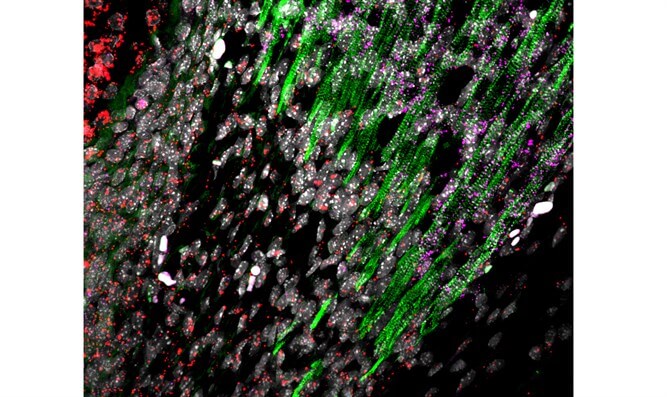Researchers at the Rappaport Faculty of Medicine at the Technion discovered that the connection between tendons and muscles is formed by hybrid cells that merge with the muscle fibers and "know" how to cause the ends of the muscle to express tendon characteristics

Tendons are fibrous connective tissues that connect muscles and bones. Since tendons, muscles and bones are characterized by very different mechanical properties, it is not clear how they connect to each other in a way that allows them to withstand large loads during muscle contraction.
In a new study conducted at the Technion, the connection between the tendon and the muscle - the tendon-muscle interface - was examined. the study published inNature Communications. Led Prof. Peleg Hasson and PhD student Vasal Yassin in Darna From the Rapaport Faculty of Medicine.
Tendon-muscle interfaces greatly affect motor abilities and resistance to loads, and damage to the development of these interfaces can cause tears and impairment of muscle activity. Therefore, understanding the molecular mechanisms of the process is a very important goal.
The Technion researchers discovered that in a certain sense, the ends of the muscle are born from the tendon; More precisely, certain cells located in the vicinity of the muscle ends and originating in the tendon contain tendon characteristics but express muscle genes. These cells cluster into the muscle fibers in the area of the muscle-tendon interface. As a result, hybrid fibers are formed whose ends turn from muscle tissue to tendon tissue, thus creating the same interface between muscle and tendon. The breakthrough was achieved through innovative methods including innovative technology for single cell analysis (scRNAseq).
The researchers estimate that this mechanism, which enables the development of various connective tissues from hybrid fibers, also exists in other organs of the body.
Researchers from the University of Cincinnati School of Medicine and the affiliated Children's Hospital participated in the study. It was supported by the National Science Foundation (ISF), the Rappaport Institute at the Technion, the Pew Charitable Trusts and the NIH.
for an article in the scientific journal Nature Communications.
